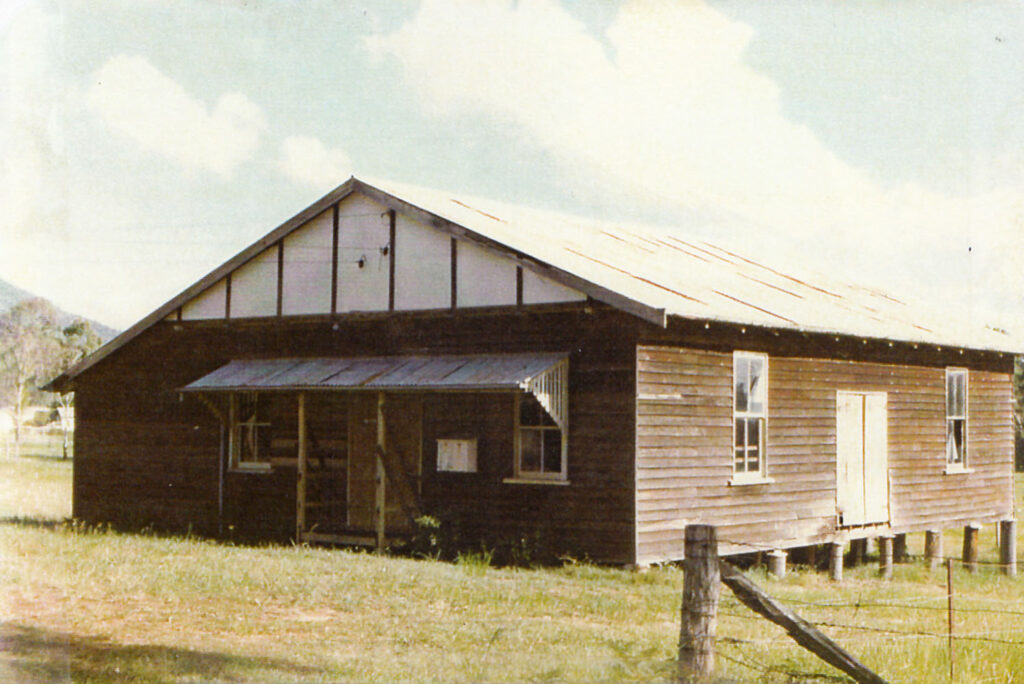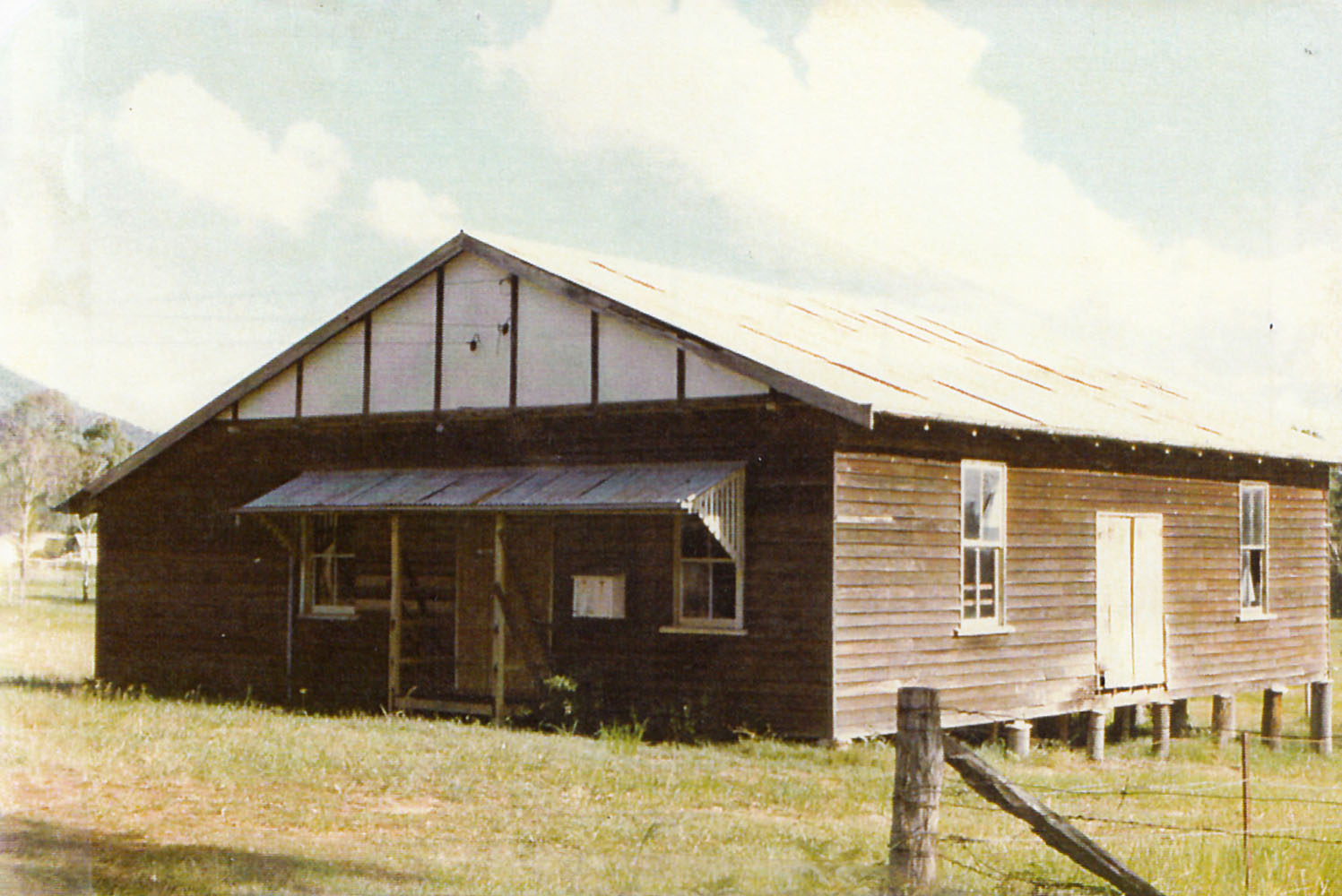History of Tambourine & Surrounding Region – ‘Tamborine’s Buildings – The Hall’ – Part 1
In this edition, we are featuring an early structure of Tamborine – ‘The Tamborine Memorial Hall’:
In the early 1870s, as the beginnings of Tambourine was developing, the very centre of the township was originally located on the Yore Property (known as ‘Spiddal’). The town began at the front gate and is said to have included a hotel, hall, saddlery, slaughter yard and butchers shop, a Roman Catholic Church and School, and the Divisional Board Office (as indicated on a plan supplied by Tom Yore dated 24/4/1896). The floods of 1887 went through the property and ‘smashed’ the hotel which was later rebuilt near the main road of the property (as indicated on the plan).
The Tambourine Division was separated from the Tabragalba Division (one of 74 divisions within Queensland under the Divisional Boards Act 1879) and was established on 4 October 1890. The Divisional Board Office was the administrative centre of the Tambourine local government division and, with the passage of the Local Authorities Act 1902, became the Shire of Tambourine on 31 March 1903. The Tambourine District Shire Council was located in a building close to Tamborine’s established St Patrick’s Catholic Church (near today’s centre of town – an existing house opposite Shell Tamborine).
Existing hall documentation indicates that the ‘Tambourine Hall’ was later located within the Tambourine Shire Council Offices and tells of the first recorded public event held in a hall at Tamborine – which can be authenticated from an entry in a school type exercise book – as a dance held on 20 December 1919.
On 2 October 1920, a public meeting was held in the Shire Hall to discuss the construction of a new hall. People present at the meeting were: AC Stubbs, T Adkins (railway ganger), J Fielder, W. Birley, R Martin, A Heyer (gardener at Mundoolun), Mrs Adkins (station mistress), B. Birley, Miss Stubbs, B Armstrong (local store keeper), Miss Pringle, JH Hall, M Ashby (road labourer), J Barry, A Reid, Miss Adkins, Mrs Dunn, and J Leach. Mrs J Leach was appointed as Secretary and Mr B Armstrong as Treasurer, with a Committee comprising of T Adkins, W Plunkett, B Birley, J Barry, E Walsh, B Armstrong, J Leach, and J Rafter. At a later meeting the Committee officially became the Hall Committee and Mr W Plunkett accepted the position of Chairman. At this meeting Mr Barry offered the Committee a piece of land for the hall which was gratefully accepted, and a cost for the hall of “Size 50 x 30 hardwood crowsash floor, 4 windows, 2 doors, stumps found” was requested. Subscribers, including J Hall, B Armstrong, B Birley, T Adkins, W Plunkett, and J Leach, each contributed funds to the total of £195 for the hall’s construction.
At another meeting the Committee was forced to reject the offer of land by Mr Barry due to a mortgaging issue. The Committee then approved payment of £5 in connection with purchase of a block of land with final payment made in July 1921. A tender price by Mr Geissmann for construction of the new hall of £315 was accepted with completion to be three months after the contract was signed. It is believed the land would have been purchased from the Yore Estate as the hall was erected south of the entrance of Spiddal on the Western side of the highway (Tambourine Logan Village Road – as indicated on the plan).
Monies were raised to purchase various items of equipment necessary for the hall to properly function when completed, including that a piano be kept in tune, and a stage be erected. There is no actual date recorded for completion of the hall nor how this memorable event was celebrated, but it is noted Mr Geissmann had been paid in full the amount of 320 pounds, seventeen shillings, and nine pence in 1921. Dances quickly became a regular monthly feature with initial charges of 3/- a double ticket and 2/- a single. Sports days were also popular for which the entrance fees was 1/16. And horse racing presumably also played a part as at one committee meeting, members were allocated various positions of Starters, Judges, Clerk of Scales, Handicappers, and Stewards. A major decision made was to form a Ladies Committee, especially to staff a refreshment booth at an upcoming Sports Day being organised. Members of the first Ladies Committee were: Mrs EP Walsh, Mrs A Massie, Miss K Siganto, and Miss Knight. In most cases it was that “refreshments be left to the Ladies Committee”. They would make recommendations at times for events inside the hall who would man the various offices of: ticket seller, door, MC, boiling the billy, and so on. Much the same system applied to events held out in the open but, for example, the Motor Gymkhana held later on was somewhat more comprehensive than the requirements for a dance.
In May 1929, a special public meeting was called for the most important resolution since the inaugural meeting of 1921, which was carried by the full committee: “That the Hall Committee having achieved what they set out to do, that is to build the Hall and give it free of debt for use of the Tamborine people they now resign and intend to call a meeting of residents to elect a committee to carry on.” A great moment for all members of the main Committee, Ladies Committee, and members of the general public who supported the committee so enthusiastically since 1920. A vote of thanks was carried and placed on record for the services rendered by all concerned in both the management of the Hall and in handing it over to the community free of debt! The long term future of the Hall was subsequently examined at length, particularly its position in relation to the township and its residents. A new Committee was established at the meeting which went on to expand activities including: a picture benefit, rodeos, and a maiden campdraft.

In the following edition, we will continue the tale of evolution of the Tamborine Memorial Hall. Stay tuned to see the story unfold!
